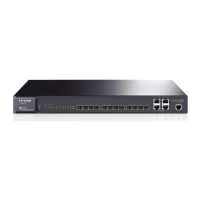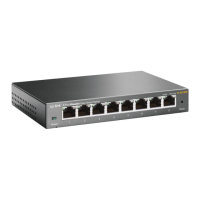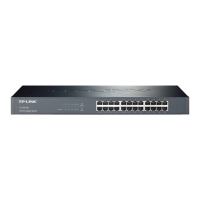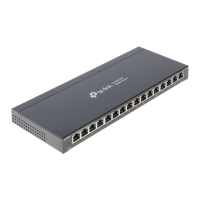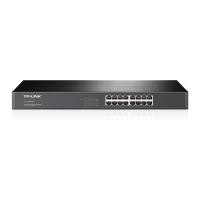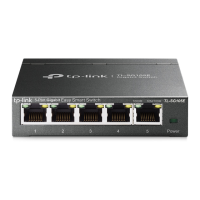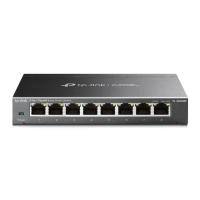131
Chapter 24 Port Mirror Commands
Port Mirror refers to the process of forwarding copies of packets from one port to a mirroring port.
Usually, the mirroring port is connected to data diagnose device, which is used to analyze the
mirrored packets for monitoring and troubleshooting the network.
mirror add
Description
The mirror add command is used to configure Port Mirror function, to create a
mirror group or add a mirrored port to a mirror group.
Syntax
mirror add mirrored-port mirroring-port {none|egress|ingress|both} group-num
Parameter
mirrored-port —— List of mirrored port.
mirroring-port —— Specify the mirroring port which obtain the packets of the
mirrored port.
ingress —— Ingress monitoring. Select this option, the incoming packets
received by the mirrored port will be copied to the mirroring port.
egress —— Egress monitoring. Select this option, the outgoing packets sent by
the mirrored port will be copied to the mirroring port.
both —— Ingress and Egress monitoring. Select this option, the incoming
packets received and the outgoing packets sent by the mirrored port will both be
copied to the mirroring port.
group-num —— Configure the mirror group number you w
ant to configure.
Command Mode
Global Configuration Mode
User Guidelines
1. Mirrored ports number is not limited, but it can’t be the mirroring port at the
same time.
2. Whether the mirroring port and mirrored ports are in the same VLAN or not
is not demanded strictly.
3. The mirroring port and mirrored ports cannot be link-aggregation member.
Example
Configure the mirror group 1, port 2,5,6,7 and 9 as mirrored ports, port 10 as the
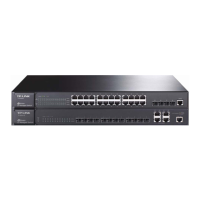
